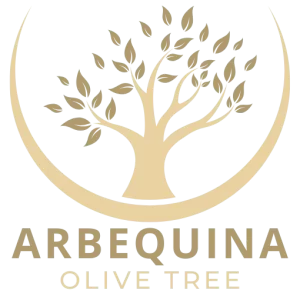Arbequina olive trees are hardy and low-maintenance, but giving them the right soil and nutrients will help them thrive. In this guide, we’ll cover the best soil for an Arbequina olive tree and fertilizer tips for olive trees, so you can provide optimal care for your tree.
Soil Requirements for Olive Trees
Well-Draining Soil: The number one rule is that olive trees need excellent drainage. In their native Mediterranean habitat, olives often grow in rocky, gravelly soils where water doesn’t linger. Avoid heavy clay soil, which can stay waterlogged and suffocate the roots (leading to root rot and yellow leaves). If you have clay soil, consider mixing in sand, fine gravel, or compost to improve drainage, or plant your olive on a slight mound to promote runoff.
Soil Type and pH: Olives tolerate a range of soil types as long as drainage is good. They do well in sandy or loamy soils. They actually prefer a somewhat alkaline soil (pH around 7–8) but will grow in neutral soil too. If your soil is very acidic (pH much below 6), you can mix in a bit of lime to raise the pH. Extremely alkaline soil (pH above 8.5) can cause nutrient issues (like iron deficiency), so in those rare cases, adding soil sulfur or acidic compost can help. Generally, aim for a neutral to slightly alkaline soil environment.
Potting Mix for Potted Olives: If growing an Arbequina in a container, choose a well-draining potting mix. A cactus or citrus potting mix is a great choice because it’s formulated to drain quickly. You can also make your own by combining regular potting soil with extra perlite or coarse sand. Ensure the pot has drainage holes. It’s a good idea to put some gravel or broken pottery at the bottom of the pot to prevent soil from clogging the holes. Remember, potted olive trees hate “wet feet,” so when in doubt, err on the side of a grittier, faster-draining mix.
Soil Nutrition: While olives can survive in poor soil, they’ll perform better in moderately fertile soil. Mixing some well-rotted compost into the planting hole (or into the potting mix) can provide slow-release nutrients and improve soil texture. Just don’t overdo high-nitrogen amendments or manure; too much nitrogen can lead to lots of leafy growth but fewer olives.
Fertilizer for Olive Trees
Olive trees are not heavy feeders, but a little fertilizing can support growth and fruiting, especially in nutrient-poor soils or when grown in pots.
When to Fertilize: Feed your Arbequina olive tree during the growing season – typically spring and early summer. Avoid fertilizing in late summer and fall, so the tree can slow down and harden off before winter. As a rule of thumb, you can fertilize olives in early spring (around March) and again in late spring or early summer (around May/June). Newly planted olives won’t need much fertilizer their first year if you amended the soil, but in subsequent years, regular feeding helps.
What to Use: A balanced, general-purpose fertilizer (like a 10-10-10 NPK) works well. You can also use a fertilizer formulated for fruit trees or citrus, which often has micronutrients that olives appreciate. Another option is organic fertilizer – well-composted manure, fish emulsion, or pelletized organic fruit tree fertilizers can gently feed the tree. The key nutrient for overall growth is nitrogen (N), so ensure your feeding provides enough nitrogen. However, too much nitrogen can cause excessive foliage and few fruits, so balance is important.
How to Apply: For an in-ground olive, sprinkle the fertilizer under the tree’s canopy (where the feeder roots are), then water it in. Keep fertilizer a few inches away from the trunk to avoid burn. For a potted olive, use a smaller amount of fertilizer – either a diluted liquid feed or a half-strength application of slow-release granules. Always follow the product instructions; when in doubt, start with a bit less (you can always add more later, but it’s hard to reverse over-fertilization).
Signs of Nutrient Deficiency: If your olive tree’s leaves are uniformly pale or yellowish (especially older leaves), it might need a nitrogen boost. If new leaves are yellow with green veins, that can indicate iron deficiency (common in very alkaline soil) – an iron chelate supplement can help in that case. A healthy olive tree generally has steady, light green new growth and deeper green older leaves.
Don’t Over-Fertilize: It might be tempting to feed frequently, but too much fertilizer can harm your olive. Over-fertilization can cause burnt leaf tips, very dark overly lush growth (which can attract pests like aphids), or even root damage. Olive trees are adapted to lean soils, so they truly need only moderate feeding. If you’re using chemical fertilizers, two applications a year is usually enough. If you’re using organic methods, you might do 3–4 smaller feedings since organics release slowly.
Water and Nutrient Balance
Proper watering goes hand in hand with soil and fertilizer. Nutrients are accessible to olive roots only if the soil is moist (but not waterlogged). After fertilizing, water the tree well to help carry nutrients to the root zone. During the growing season, keep the soil evenly moist – don’t let an olive (especially in a pot) dry out completely for long periods, or the fertilizer you added can’t do its job. On the flip side, waterlogged soil will deprive roots of oxygen and lead to nutrient deficiencies even if fertilizer is present.
By providing your Arbequina olive tree with well-draining, slightly alkaline soil and a sensible fertilizing routine, you’re setting it up for success. The tree will reward you with healthy growth and, in time, a bounty of olives. Remember: olives are tough, but a bit of extra care with soil and feeding will make your tree thrive instead of just survive.
